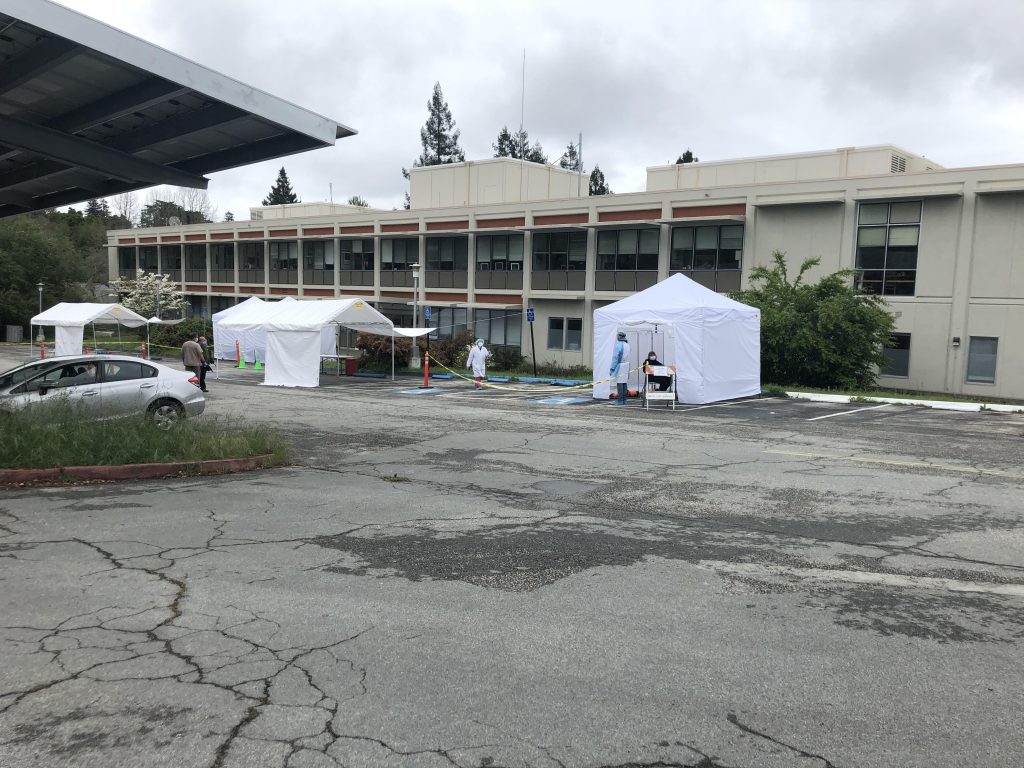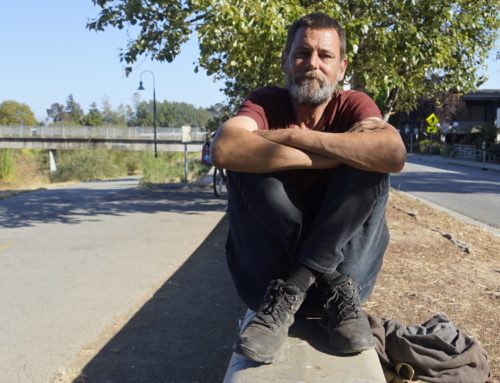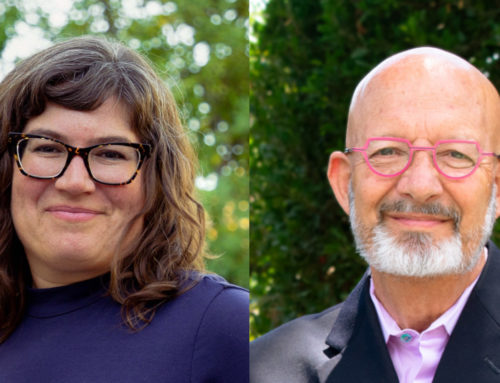Santa Cruz Local’s Jerimiah Oetting answers your questions on coronavirus testing. Who gets tested? What is the process? How long does it take? Why is testing limited in Santa Cruz County and when will that change?
Jerimiah talked to a medical leader, a local scientist and others to get some answers.
This is the first installment of Santa Cruz Local Answers, where Jerimiah tackles your coronavirus-related questions.

TRANSCRIPT
Transcripts are usually only available to members. We offer our coronavirus-related transcripts free as a public service.
[MUSIC]
Kara Meyberg Guzman: I’m Kara Meyberg Guzman and this is Santa Cruz Local.
Today, we’ll hear from Jerimiah Oetting, Santa Cruz Local’s new science reporting intern. Jerimiah’s a graduate student at UC Santa Cruz. He’s in the Science Communication Program. He’s with us for the next several weeks.
Jerimiah, welcome.
JERIMIAH OETTING: Hi Kara.
KMG: Tell us a little bit about your project over the next several weeks.
JO: Sure. I’m producing a series called “Santa Cruz Local answers” where I answer questions from you, our readers and listeners. We have a survey up on our Santa Cruz Local COVID-19 resources page, at santacruzlocal dot org.
You can ask your questions there and I’ll do my best to answer them here.
So far, many of you have questions on testing.
First question, who gets tested?
For this, I asked Dr. Casey KirkHart. He’s the chief medical officer of the Santa Cruz Community Health Centers. He said at the very least, you need to show symptoms to qualify for a test. It’s the same criteria at clinics across the county.
DR. CASEY KIRKHART: It’s tricky because you know, this is new for us. We’re every day we’re, you know, we’re looking into what symptoms are more common. So we’re certainly not testing everyone who calls who has symptoms that could include coronavirus, but, but through history taking and we can kind of parse out who might be more likely to be coronavirus or who might likely to be something else like a cold or allergies. And then that helps us guide what, you know whether we would test you or not.
JO: KirkHart oversees the East Cliff Family Health Center in Live Oak. There, medical workers are testing patients in the parking lot through their car windows. They use a long Q-tip to swab the back of patients’ throats. It’s inserted through the nose and mouth. Drive-through testing like this is happening at clinics across the country.
Testing in Santa Cruz County is limited to just a few groups. Not everyone who wants a test will get one.
The first step is to call your doctor, you won’t get tested unless you’ve called ahead. If you don’t have a doctor, you can call 2-1-1. You’ll be connected with a health care worker for free. They’ll ask you a series of questions about your symptoms and medical history. Then, if you qualify, they’ll ask you to come in for a test.
Doctors prioritize tests for people with severe symptoms, and people with pre-existing conditions. Those conditions include heart disease, lung disease and diabetes.
Another group that qualifies for testing is medical workers. KirkHart said his clinics started proactively testing its workers last week, even if they don’t show symptoms. The CDC recently updated its guidelines on testing to include medical workers.
KIRKHART: Which I think is a very wise thing to include because if we don’t have healthy health healthcare workers, in order to manage these, you know what we’re expecting to be a surge of sick patients with coronavirus, then our health care system is basically stuck.
So let’s assume that you’re one of the few that qualifies for a test. If you don’t need to be hospitalized, you’ll be sent home to wait.
JO: KirkHart said it’s best to assume you’re positive while you’re waiting for your results. In fact, anyone showing symptoms should stay quarantined for two weeks. Don’t leave quarantine until your symptoms are gone, doctors say.
KIRKHART: The advice actually we’re giving for symptomatic patients is, remain sequestered in quarantine until seven days from when your symptoms began until 72 hours after they were resolved. There is a false negative rate that we are aware of. So we might give you the same advice. We want to we want you to be symptom free, and we want you to be fever free before you’re back into, you know, into normal circulation with your, with your household.
JO: Santa Cruz County still doesn’t have very many test results. But the county is catching up, at least with our neighboring county, Monterey.
As of Thursday, Santa Cruz County had results from 1,753 tests. That number has more than tripled in a week.
Monterey County had 1,440 test results as of Monday. So far, Santa Clara County has more than 12,000 test results.
So why are we rationing tests?
We heard from several sources that the limiting factor is the turn-around time from laboratories.
But things appear to be ramping up. KirkHart told me the wait time in mid-March was sometimes up to two weeks. Within the last week though, results have been received within a couple days.
One reason why our county has so few test results is that we don’t have our own testing facilities. We’ve depended on Santa Clara County’s public health lab and commercial labs outside the county. That’s expected to change next week. Three facilities in the county are expected to begin processing tests. That’s Dominican Hospital, Dignity Health and Santa Cruz County’s Emeline clinic.
Also, local scientists at UC Santa Cruz are hoping to open their labs for testing. They say they could handle hundreds of tests per day. Right now, they’re working through the regulatory process. It’s hard to say exactly how long it will be before they can provide test results. A scientist I spoke to is optimistic it will be soon.
For now, our county health department is not focused on testing — they’re focused on hospital capacity. They’re preparing for a possible surge of patients in the next few weeks.
So, without testing, how are we supposed to know how much the virus has spread in our community? Some of you wrote to ask us that as well.
According to county health officials, they’re looking at the number of hospitalizations as a substitute for widespread testing.
Here’s the latest numbers: there are 13 hospitalizations in Santa Cruz County. That’s well within the county’s current capacity. But health officials expect that number to rise and exceed capacity. A peak in cases is expected in the next few weeks.
The county has a new data dashboard. They list hospitalization numbers, the number of cases and statistics on testing. We put the link for it in our show notes.
I hope that helps answer some of your questions about testing., I’m looking forward to answering more, so please be sure to get online and submit more questions on our coronavirus resources page.
My name’s Jerimiah Oetting and thanks for listening.
Stay healthy out there!
KMG: Thanks Jerimiah, for your reporting. If you have questions you want answered, submit them at santacruzlocal.org/coronavirus. We’re also answering your questions in our newsletter.
If you haven’t already, you can sign up for our newsletter at santacruzlocal.org. Our newsletter is free. And we’re in your inbox two to three times a week.
Our journalism is supported mostly by memberships from people like you. Membership signup is at santacruzlocal.org/membership.
I’m Kara Meyberg Guzman.
Thanks for listening to Santa Cruz Local.




